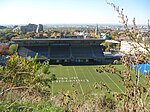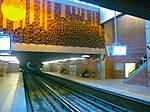École Polytechnique massacre

The École Polytechnique massacre (French: tuerie de l'École polytechnique), also known as the Montreal massacre, was a 1989 antifeminist mass shooting at the École Polytechnique de Montréal in Montreal, Quebec. Fourteen women were murdered; ten further women and four men were injured. On December 6, 1989, Marc Lépine, armed with a legally obtained Ruger Mini-14 semi-automatic rifle and hunting knife, entered a mechanical engineering class at the École Polytechnique. He ordered the women to one side of the classroom, and instructed the men to leave. After claiming that he was "fighting feminism", he shot all nine women in the room, killing six. The shooter then moved through corridors, the cafeteria, and another classroom, specifically targeting women to shoot for just under 20 minutes. He killed eight more women before committing suicide. After the attack, Canadians debated various interpretations of the events, their significance, and the shooter's motives. The massacre is now widely regarded as an anti-feminist attack and representative of wider societal violence against women; the anniversary of the massacre is commemorated as the National Day of Remembrance and Action on Violence Against Women. Other interpretations emphasize the shooter's abuse as a child or suggest that the massacre was the isolated act of a madman, unrelated to larger social issues. The incident led to more stringent gun control laws in Canada, and increased action to end violence against women. It also resulted in changes in emergency services protocols to shootings, including immediate, active intervention by police. These changes were later credited with minimizing casualties during incidents in Montreal and elsewhere.
Excerpt from the Wikipedia article École Polytechnique massacre (License: CC BY-SA 3.0, Authors, Images).École Polytechnique massacre
Boulevard Édouard-Montpetit, Montreal Côte-des-Neiges–Notre-Dame-de-Grâce
Geographical coordinates (GPS) Address Phone number Website Nearby Places Show on map
Geographical coordinates (GPS)
| Latitude | Longitude |
|---|---|
| N 45.504722222222 ° | E -73.612777777778 ° |
Address
Université de Montréal
Boulevard Édouard-Montpetit 2900
H3T 1J4 Montreal, Côte-des-Neiges–Notre-Dame-de-Grâce
Quebec, Canada
Open on Google Maps






